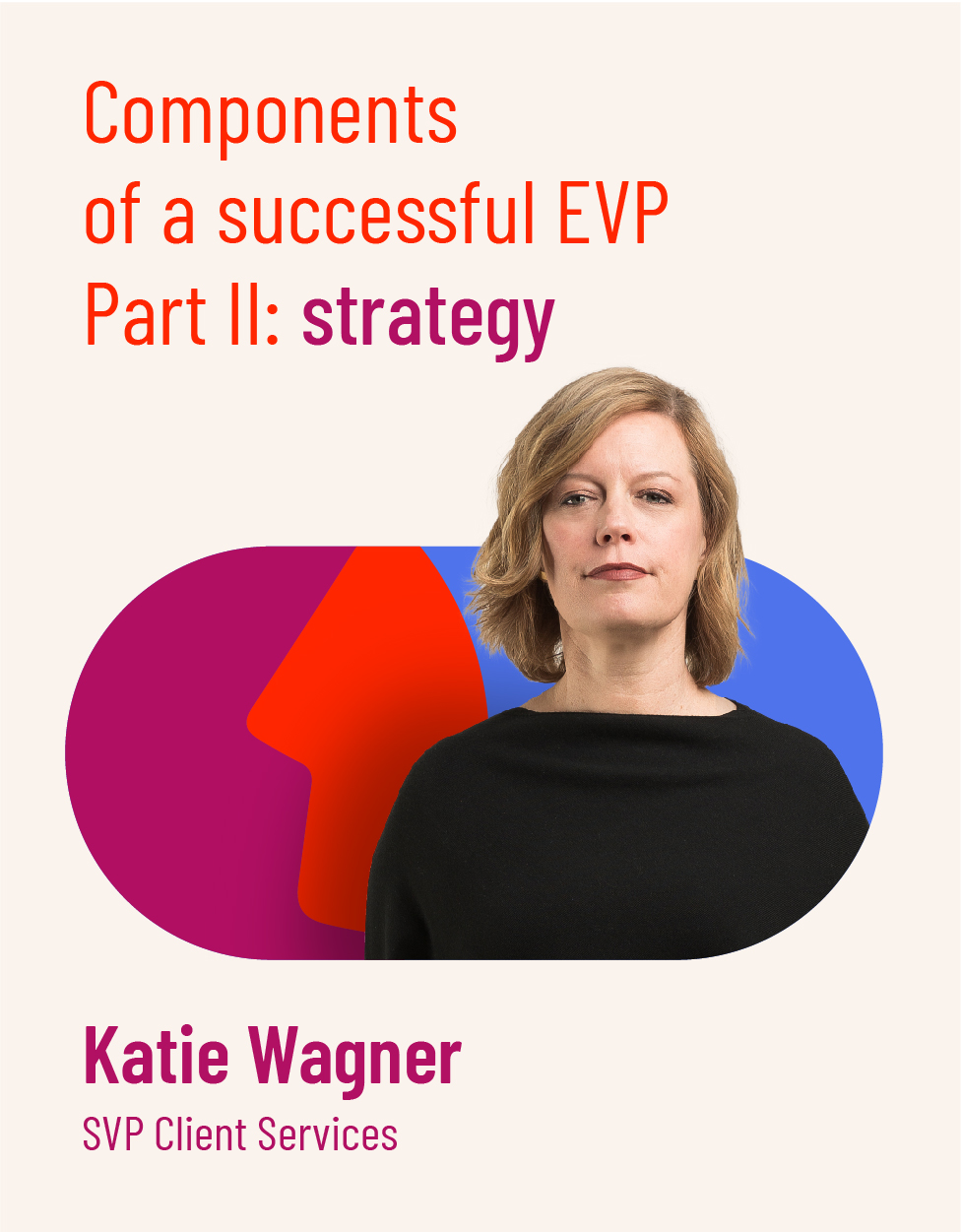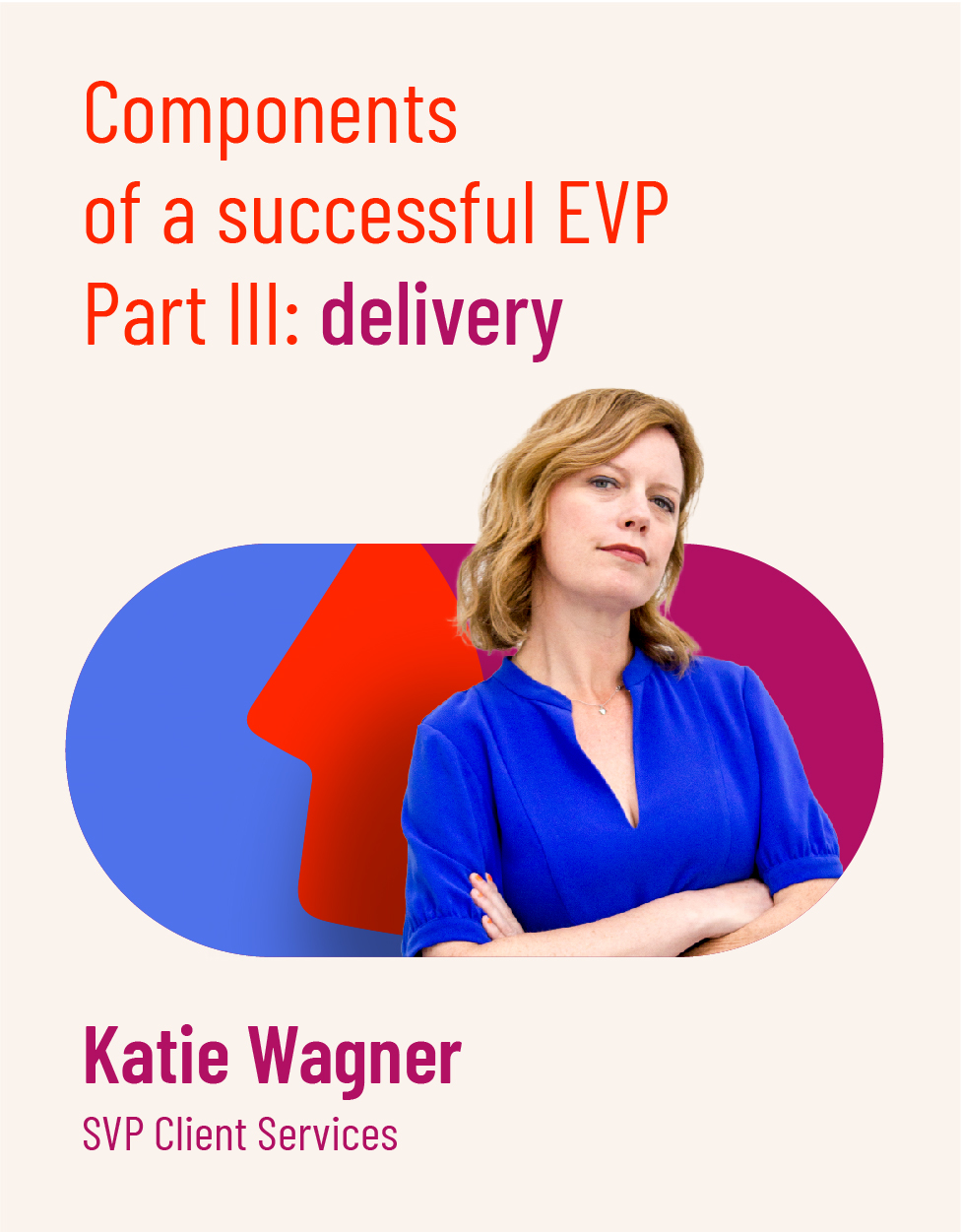Components of a successful EVP—Part I: discovery

An employee value proposition (EVP) is a strategic communications approach that expresses to employees and candidates what the promised value of working at an organization is. The process of developing the EVP enables your organization to understand its true value of being an employer, where the gaps are (against competitors and compared to employees’ and candidates’ needs and wants) and where to invest in closing those gaps.
And—equally important—your EVP helps you leverage storytelling methods to better connect with employees and candidates when communicating and delivering that value along their employee journey.
But where and how does an organization start building a successful EVP?
Developing a successful EVP has never been more crucial.
If you don’t tell your organization’s value proposition to your employees and candidates, someone else will do it for you.
But while many organizations understand the importance of telling their value proposition to their customers, many more fail to apply it internally. Too many organizations have neglected the strategic effort of communicating the value of working at their organization to employees and candidates via unified messaging to ensure a common, entrenched understanding. And with how decentralized work and communications channels have become in recent years, expressing that value has become increasingly challenging.
Organizations need the means to promote their employee experience, connect with employees and candidates and follow through on their promises. As a result, EVPs are more crucial than ever.
Research methods for EVPs
In the simplest terms, building successful EVPs begins with extensive research and discovery.
Before developing a new EVP or updating an existing one, your organization needs to answer:
- What do we currently offer to employees from a purpose to rewards to opportunity perspective (and everything in between)?
- What is the value of working at the organization that your communications currently express?
- What is the value employees and candidates actually take away based on their experiences?
- What should the value be (and what gaps currently exist between that and the first three answers)?
Organizations can use a combination of different research and discovery methods—explored below—to determine the answers. And from those findings, you can formulate your EVP perspective—or what EVP elements you should lean into that authentically reflect the value of working at your organization and differentiate that experience from your competitors.
Method 1: EVP audits
Assessing the current state of your EVP starts with conducting audits, for which there are a few primary goals:
- Understanding what you currently offer to employees from both a tangible and intangible perspective
- Determining how you are currently expressing your value inside and outside the organization (e.g., experientially, via communications, leadership’s understanding)
- Understanding your competitive landscape and how your competitors are positioning themselves as an employer
- Finding “white space,” or EVP elements that align with your organization and are underutilized by competitors—enabling you to stand apart
When conducting these audits, no stone should be left unturned.
Internally, you’ll need to immerse yourself in current employee and candidate communications and company channels, as well as analyze how your brand is positioned as an employer, its strategy and the average employee’s journey.
Externally, you’ll need to investigate your competitors’ value proposition and look more generally outside of your industry to see how others are expressing their EVPs so you can learn from them. Regardless of the industry, organizations that successfully deliver impactful employee experiences and have employees and candidates regularly advocating for them will provide further insights on building strong EVP “pillars” (i.e., rewards, opportunities, company prestige, employee community, and the inherent value of employees’ work).
Method 2: Stakeholder interviews
The EVP discovery process next involves stakeholder interviews. These conversations will help you uncover how your leaders understand and carry out the value of working at your company. As these roles carry significant responsibility for knowing and delivering on that value, their input is crucial.
Speak with organization stakeholders to surface what they think employees and candidates are seeking from their employer relationships and all the things of value that the brand does to attract and retain them. Then, incorporate that information during the EVP strategy phase. It will help you determine opportunities for bringing to life those things that employees and candidates want through their relationship with the company and the various rewards offered to them.
However, remember to evaluate this information with respect to what the organization can authentically deliver. If your brand starts making grandiose promises that go unfulfilled or culture statements that don’t reflect reality, employees will recognize the inauthenticity quickly and begin losing their belief in what the company is promising them in exchange for their work.
Method 3: Employee believer and relationship research
As with all communication, you need to know your EVP’s audience to craft a meaningful and resonant story around the value of working for your organization. And that’s your employee believers.
To determine your employee believers, you need to identify the mindsets of those employees and candidates who will do their best work in support of what the organization is trying to achieve. This involves leveraging extensive statistical analysis of employee and candidate surveys alongside comprehensive research to determine your organization’s employee believer psychographics (i.e., categorizing them by how their beliefs, values, traits and other motivations influence their decisions).
But identifying them is only the first part, as you’ll need to monitor the relationship they form with your brand over time, as well, to detect and rapidly respond to any shifts. Charting a path toward a successful EVP requires understanding your starting point, and first-hand thoughts and feelings reported by employees and candidates often provide the most accurate orientation. So, organizations should implement surveys for employees and candidates to gather that data.
The primary insights you’re seeking are:
- How employees understand the relationship the organization is cultivating with them
- Where misalignments between the EVP and the brand occur
- What EVP elements employees and candidates are looking for
Quantitative metrics will shed light on employee and candidate sentiment, such as their connection to the organization, passion for their job and willingness to advocate for the brand as a top employer.
Successful EVPs start with understanding and perspective.
Developing a successful EVP that attracts top talent, resonates with employees and candidates and improves the organization’s reputation is a significant undertaking. But your organization can minimize the challenges involved if it develops a solid grasp on where it stands, what employees and candidates are looking for and the opportunities that enable your company to stand apart.
And with your EVP discovery findings, you’ll be able to identify patterns and themes to inform what is the most authentic and resonant driver of your value as an organization.

